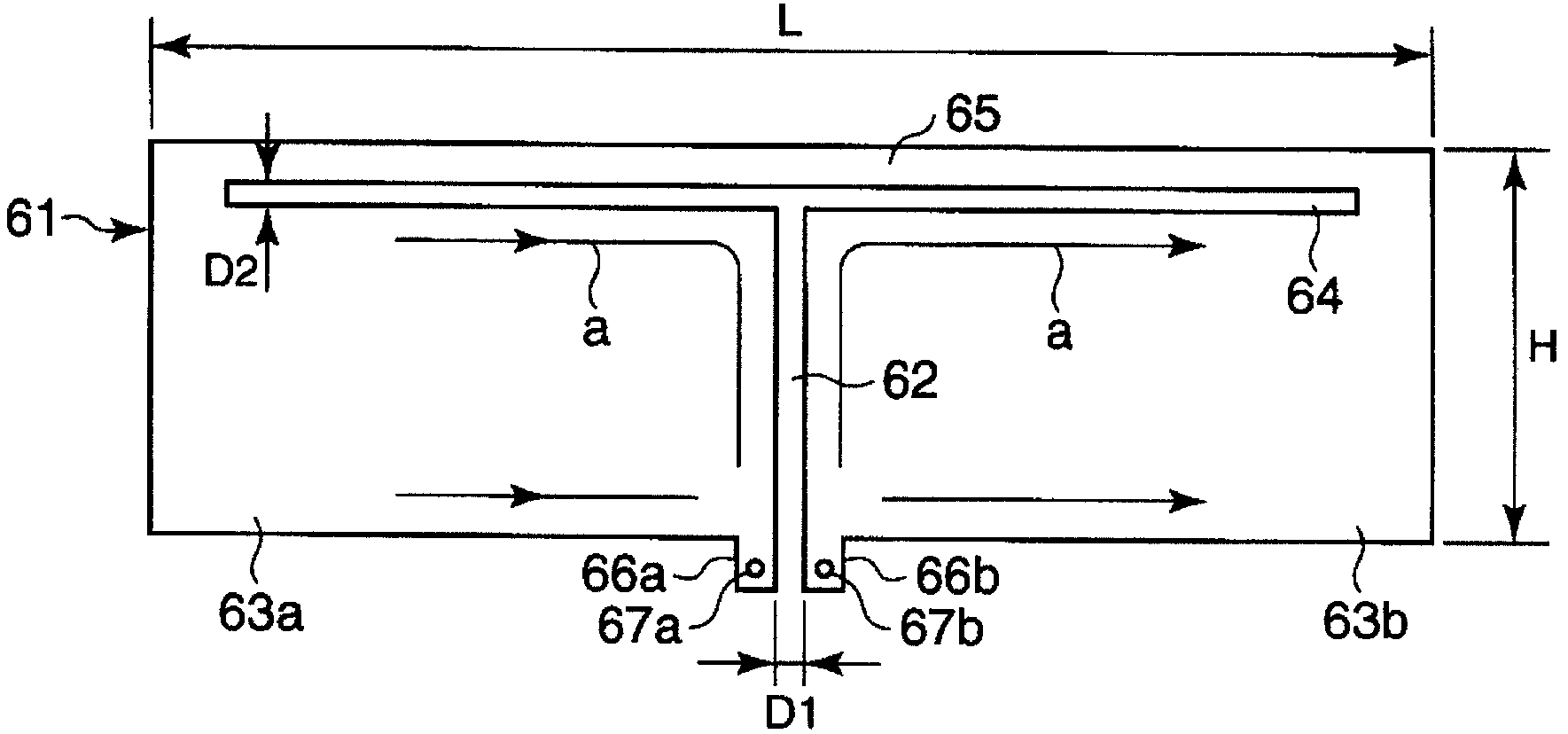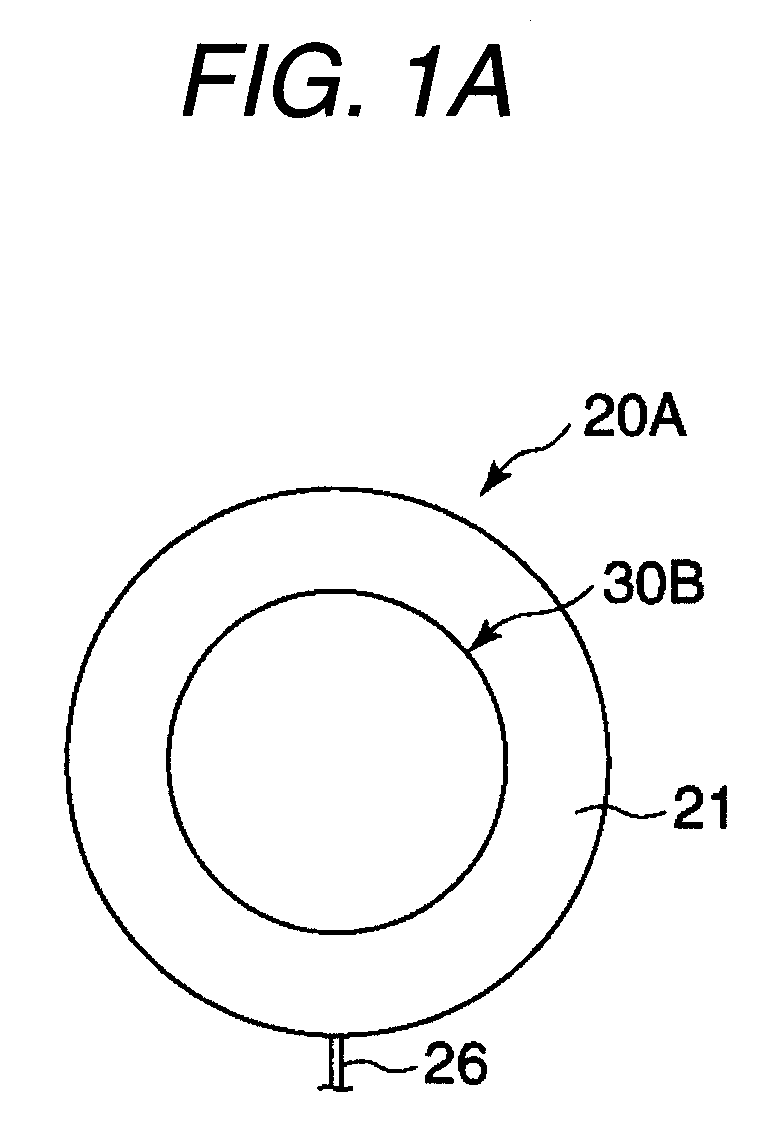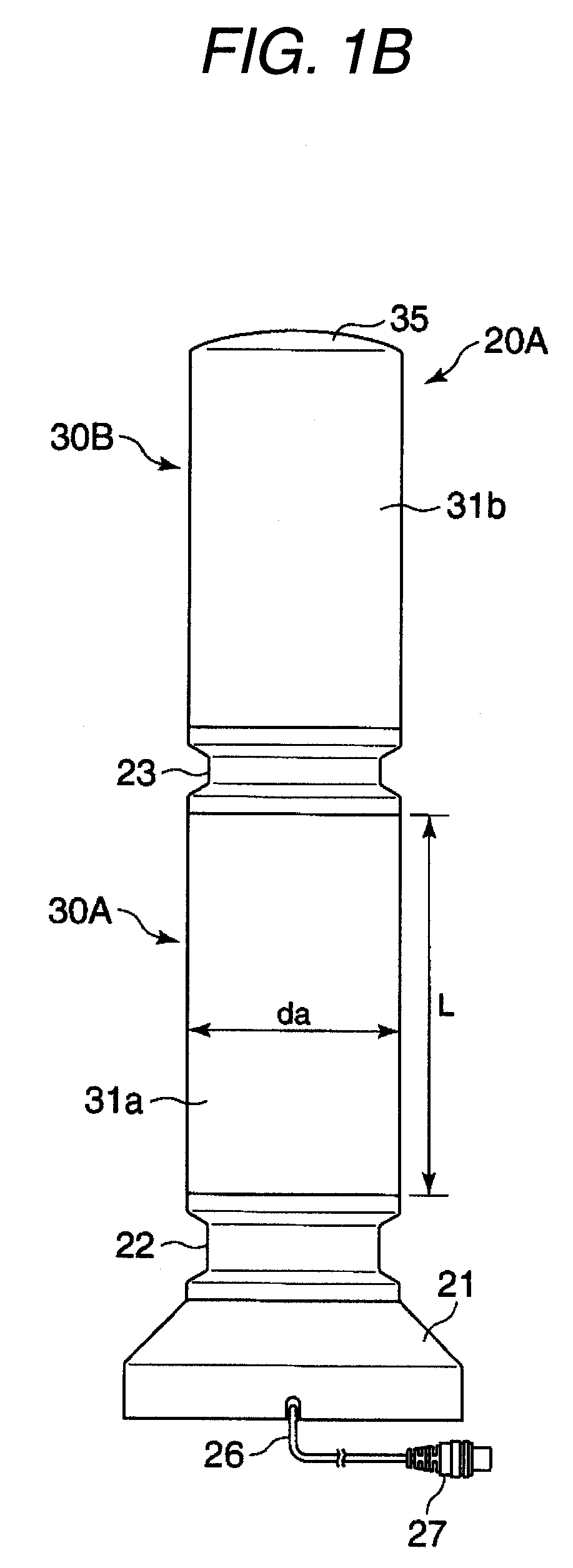Antenna
a technology of antennas and antennas, applied in the field of antennas, can solve the problems of complex cable wiring and cumbersome antenna construction, and achieve the effects of reducing the adjusting time, facilitating setting, and large free-range antenna installation
- Summary
- Abstract
- Description
- Claims
- Application Information
AI Technical Summary
Benefits of technology
Problems solved by technology
Method used
Image
Examples
first embodiment
MODE
[0044]In an indoor antenna 20A shown in FIG. 1A to FIG. 1C, reference numeral 21 indicates a base which is made of, for example, a synthetic resin and is formed in, for instance, a circular shape. A first antenna main body 30A is mounted via a supporting cylinder 22 on the base 21, and a second antenna main body 30B is mounted via another supporting cylinder 23 on the first antenna main body 30A.
[0045]A diameter of the base 21 is set to approximately 0.22λ (=about 140 mm). A bottom plate 24 is detachably provided on the base 21 by employing, for instance, screws, into which a mixing board 25 is arranged. A mixing circuit for mixing a reception signal of the first antenna main body 30A with another reception signal of the second antenna main body 30B is provided on the mixing board 25. A mixed output of this mixing circuit is conducted via an output cable 26 to an external portion of the base 21. An output-purpose connecting stopper 27 is attached to a tip portion of the output c...
second embodiment
MODE
[0052]The above-described first embodiment mode is described such a case that while the antenna covers 31a and 31b are separately provided with respect to the first antenna main body 30A and the second antenna main body 30B, these antenna covers 31a and 31b are coupled to each other by employing the supporting cylinder 23. In a second embodiment mode of the present invention shown in FIG. 2A and FIG. 2B, an antenna main body 30 is protected by a single antenna cover 31. This antenna cover 31 is fixed by a screw 313 at a center portion thereof, while cover elements 311 and 312 formed in, for example, semi-cylindrical shapes are joined to each other. Also, the antenna cover 31 is formed by inclining an upper edge unit.
[0053]While a lower edge portion of the antenna cover 31 is made in a small diameter, the antenna main body 30 is detachably provided on a base 21a. It should also be noted that in the second embodiment mode, the mixing board 25 is provided on the side of the antenna...
third embodiment
MODE
[0056]A third embodiment mode of the present invention shown in FIG. 3, FIG. 4A, and FIG. 4B constitutes an indoor and outdoor commonly-used antenna 20D by utilizing the antenna main body 30 represented in the second embodiment mode. In this indoor and outdoor commonly-used antenna 20D, an indoor setting-purpose base 21a and an outdoor setting-purpose base 21c are detachably are provided with respect to the antenna main body 30. For instance, while a structure between the antenna main body 30 and the bases 21a, 21c is formed as a locking type structure, the indoor setting-purpose base 21a and the outdoor setting-purpose base 21c are pivotably rotated at a predetermined angle so as to be detachably attached to the antenna main body 30.
[0057]Then, a connecting stopper 43 is provided at a center of the lower edge portion of the antenna main body 30, another connecting stopper41 is provided at an inside center of the base 21a, and when the antenna main body 30 is mounted on the base...
PUM
 Login to View More
Login to View More Abstract
Description
Claims
Application Information
 Login to View More
Login to View More - R&D
- Intellectual Property
- Life Sciences
- Materials
- Tech Scout
- Unparalleled Data Quality
- Higher Quality Content
- 60% Fewer Hallucinations
Browse by: Latest US Patents, China's latest patents, Technical Efficacy Thesaurus, Application Domain, Technology Topic, Popular Technical Reports.
© 2025 PatSnap. All rights reserved.Legal|Privacy policy|Modern Slavery Act Transparency Statement|Sitemap|About US| Contact US: help@patsnap.com



